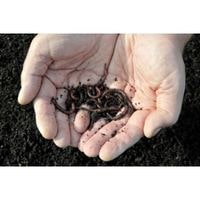How to get rid of pot worms. Houseplants are a wonderful way to bring some personality and life into your home decor, and caring for them properly is key to them looking their best.
In order to keep houseplants free of pot or pests, it’s important for you to take the following preventative measures:
How to get rid of pot worms

To remove an invasion of caterpillars, As the situation demands you need to take out your plant from the earth.
Soak it with water so as to chase worms out. Whatever you do not ever use insecticides on your plants because they have a very delicate ecosystem.
Instead, make sure to maintain a good balance in nature by introducing other predators that eat worms into your pot as well as watering soil every time it is required because overwatering potted plants can lead to damage.
Who Are These Worms?
The little white worms crawling through your flower pot may not be worms at all; they are actually the larva of a small black fly known as a fungus gnat.
This larva and these bugs may look unsightly, but worse than this; they can feed on your plants’ organic matter, including their roots.
f you notice that your potted flower plant has got an infestation of these small white worms in its soil, it’s vital to sort it out quickly. Otherwise, you could end up with one seriously diseased bunch of flowers.
If you know what kind of worms are in your potted plants and why they’re there, you can prepare to get rid of them. Here are a few methods to get rid of worms in potted plants:
Get rid of the worms by repotting your plant

When you have worms, they are most likely dirt worms. They can be hanging out at the base of the plant, especially earthworms. Red wigglers will be up toward the top of the soil.
But when you replant your plant into new potting soil and compost, when you inspect it afterward, you’ll see wiggling friends.
When repotting plants with an infestation from an invasive species,
it’s best to throw out any dirt that wasn’t washed cleanly or composted instead because otherwise, those eggs might just hatch, and you’ll have a whole new infestation.
If the plant has visible roots, make sure beforehand to rinse them thoroughly in warm water to try and wash off any worms or eggs that may be stuck on them because leaving behind any eggs will mean more worms for your poor plant.
Using a soaking solution
While worms are generally considered to be beneficial pieces of the earth, some can cause problems to your garden and landscaping.
In particular, nightcrawlers tend to define their whereabouts using the holes found in your soil.
This can cause a great deal of damage if left unattended for too long. One interesting solution consists of grinding them up in a meat grinder until you obtain a fine worm meal which can then be sprinkled over pathways or other targeted areas.
The idea is that they will move away from hot spots as they avoid being crushed by travelers unknowingly consider this a natural deterrent.
While this method might not appeal to everyone, sometimes it’s better than simply doing nothing at all until the problem worsens.
By using a chemical or organic agent
If you find that worms are becoming a problem and their populations are expanding to the point where someone might need to step in, you can go ahead and use insecticide or nematicide.
These chemical compounds will do all of the work for you. When using a specific pesticide, check to see which plants it is suitable for, indoor or outdoor use.
Check with your pets too certain poisons are intended specifically for human beings so if there’s any pet hair lying around make sure that such products are kept out of reach.
Also, confirm the status of more passive chemicals like neem oil on more passive plants as well! One excellent choice of pesticide is neem oil, made from the seeds of trees native to India.
This natural product works as a great pest repellant due to the fact that it disrupts hormone production; it works especially well on grub worms and hornworms, among many different bugs!
By introducing natural predators
Many of the worms and pests have natural predators that feed on them. It’s possible to introduce plant-friendly natural predators into your garden to deal with a garden full of worms and pests which you’ll discover can make it very healthy in the process.
Some plant-friendly predators you might want to introduce are Praying mantis, fireflies, birds, and frogs all of which need facilities such as lair and water if they’re going to stick around.
Preventing the return of worms and other pests
After soaking in warm, soapy water for 20 minutes, bring the plant inside. Planting in the spring will ensure insects do not hatch. Use only potting soil or bake it at 180 degrees Fahrenheit for 30 minutes to kill any insects.
Do not bring indoor plants outside again. Keep infested plants away from non-infested plants. Use containers with drainage holes to prevent soggy soil.
Clean your gardening tools between working with plants to prevent the spread of insects.
Make sure you inspect any new addition to your garden that you bring home for worms and other pests and then isolate them from other healthy plants for two weeks after the inspection.
Create a barrier around the base of damaged or defective plants by sticking earth or cardboard over the warm area during the time when the worms are most active during the day.
How to get rid of pot worms
Related Guides
